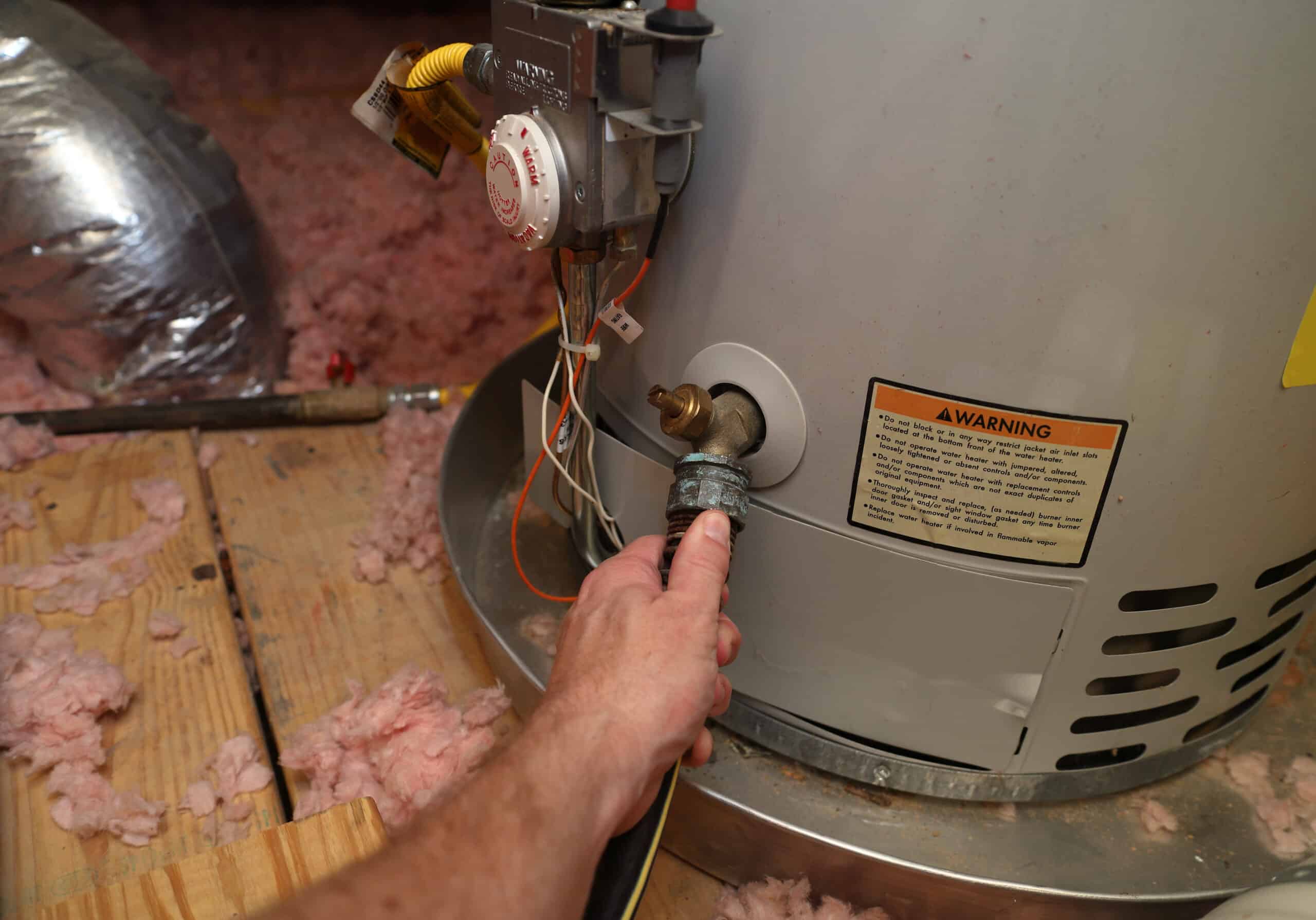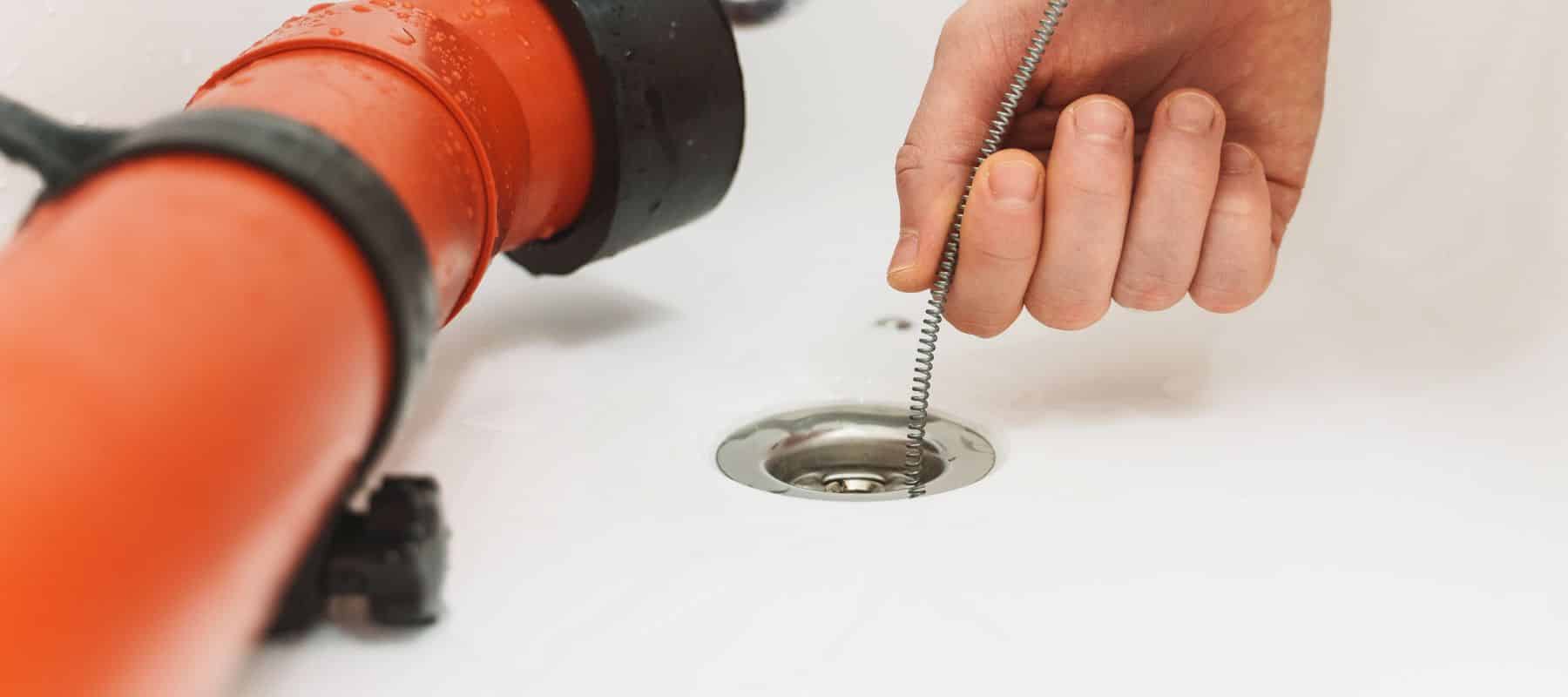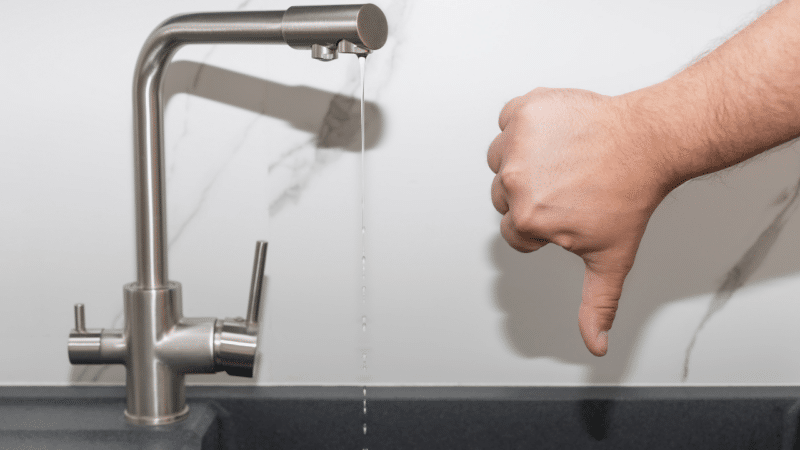In this article…
- Why Is There Chlorine in Drinking Water?
- What Are the Safe Levels of Chlorine?
- Is Chlorine in Water Bad for Your Health?
- Does Chlorine Affect Your Plumbing?
- How Can I Minimize Chlorine Levels In My Home’s Water Supply?
Have you ever turned on your faucet, taken a sip, and thought… “Why does my water taste like a swimming pool?”
If so, you’re not imagining things.
That taste comes from chlorine, and it’s pretty common in municipal water supplies, including those in the Dallas-Fort Worth area.
Now, you may also be wondering, “Why would there be chlorine in my tap water supply?” This article will answer all of your questions.
As DFW’s trusted plumbing company and water quality experts, Jim’s Plumbing Now is here to educate you on all you need to know when it comes to what’s in your water and how your plumbing functions.
Because water is such a crucial element in our daily lives and our health, understanding what’s in your water and how it affects you is important.
Chlorine is a common contaminant found in Dallas and Fort Worth’s water supply, so you want to know what levels are present, if it’s dangerous, and how it can impact your health.
This article will break down why chlorine is found in DFW’s water supply, how this affects your water’s taste and your health, and what you can do to minimize chlorine in your water.
Why Is There Chlorine in Drinking Water?
Did you know that some municipal areas’ water supplies (like DFW) have as much chlorine as a swimming pool?
It’s the ugly truth.
We’ve always been taught to rinse off after the swimming pool and get all the chlorine out of our hair and skin, so why is it purposefully put in our tap supply?
Cities add chlorine to drinking water for one main reason: to keep it safe from harmful bacteria and germs.
Before chlorine was widely used in the early 1900s, waterborne diseases like cholera and typhoid were a serious problem. Chlorine disinfects the water, making it safe to drink as it travels from treatment plants to your home.
In short, chlorine helps keep the water clean all the way to your faucet. However, it’s not uncommon that too much chlorine can make its way into your drinking water.
What Are the Safe Levels of Chlorine?
The Environmental Protection Agency (EPA) sets the maximum safe level for chlorine in drinking water at 4.0 parts per million (ppm).
Most municipal systems keep it well below that to avoid taste and odor issues while still effectively disinfecting the water.
So, if you’re drinking tap water with chlorine levels below 4.0 ppm, it’s considered safe for daily use.
How Much Chlorine Is in DFW Water?
In the Dallas-Fort Worth area, chlorine levels in drinking water average at 2.97 ppm, depending on your specific city and where you live within the distribution system.
To put this in perspective, the average amount of chlorine used in a swimming pool ranges from 3-6 ppm. This means you could be drinking more chlorine than is in your pool!
Like all contaminants and minerals in your drinking water, unfortunately, there are health concerns that come with too much exposure.
Note: If you ever notice a stronger chlorine taste, it could possibly be during annual water treatment maintenance, when cities temporarily switch from chloramine back to free chlorine to clean the distribution lines.
Is Chlorine in Water Bad for Your Health?
At regulated levels, chlorine in drinking water is considered safe for humans (emphasis on ‘considered’). However, some people may be more sensitive than others to this contaminant.
Common signs of high chlorine exposure can include:
- Dry or irritated skin after showering
- Stomach sensitivities when drinking a lot of tap water
- Notably off taste and smell
There are also byproducts of chlorine, called trihalomethanes (THMs), formed when chlorine reacts with natural organic matter in water.
These are regulated by the EPA because high levels over many years could pose health risks, such as bladder cancer, skin cancer, and harm to reproductive health and fetal development.
Thankfully, local water utilities test and treat to keep these byproducts well within safety standards, although you may want to take further action to filter out excess chlorine and improve your home’s water.
Overall, chlorine is essential to disinfect our water supplies and ensure safe drinking water free of bacteria. However, too much chlorine can result in skin and respiratory issues.
Does Chlorine Affect Your Plumbing?
While chlorine in drinking water is the number one concern, you also want to know if it can negatively impact your home’s plumbing system.
The answer? Yes, it can.
Chlorine keeps bacteria out of your water, but it can also wear down rubber seals, gaskets, and plastic components inside your plumbing over time. This can lead to:
- Faster deterioration of o-rings and gaskets
- Wear on water heater parts
- Potential leaks in older pipes and fixtures
It’s not an immediate concern, but over the years, high chlorine exposure will contribute to plumbing maintenance needs.
How Can I Minimize Chlorine Levels In My Home’s Water Supply?
Now that you have an overview of what role chlorine plays in your home’s water supply and how it can affect your health and your plumbing, you want to know how you can minimize this contaminant to improve your water’s taste and your overall health.
But first, what are some telltale signs that you have elevated chlorine levels in your home?
If your water smells or tastes like a pool, chlorine is the culprit. Even at low levels, chlorine can give water that chemical taste or odor.
This doesn’t mean the water is unsafe, but it can make drinking it less pleasant and impact the flavor of your coffee, tea, or cooked foods.
If you’ve noticed drier or itchy skin and dry hair as well, this could be a sign that there is too much chlorine in your water.
If you’re sensitive to chlorine or simply hate the taste, some of the most popular options to mitigate its levels include
- Activated carbon filters ( like those found in many fridge or faucet filters)
- Whole-home filtration systems, which remove chlorine at the point it enters your house
- Reverse osmosis systems, for a pure drinking water tap
These systems not only improve taste but can also help extend the life of your plumbing by reducing chlorine exposure.
Chlorine plays an important role in keeping DFW’s drinking water safe, but if you’re noticing a strong taste, dealing with dry skin, or are worried about its impact on your plumbing, you’re not alone.
At Jim’s Plumbing Now, we help homeowners improve their water quality every day. Whether you’re curious about water testing, installing a filtration system, or just want to make sure your pipes aren’t being worn down faster than necessary, we’re here to help.
Our high-quality water filtration systems from HALO and Brita can filter excess chemicals and minerals in your water to provide you with better-tasting, healthier water for you and your family.










